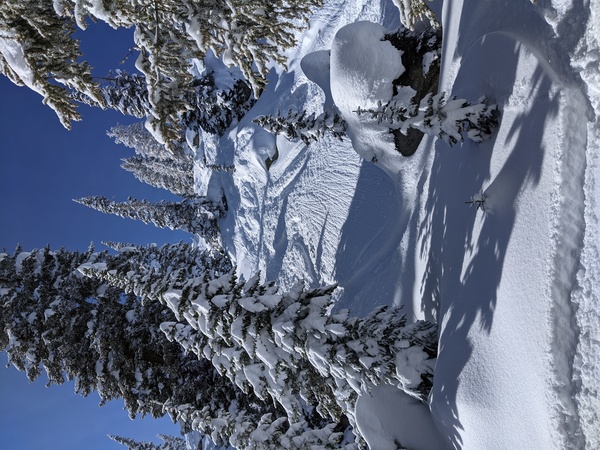Powder day potential ends with the crackle of ice
Wednesday, November 26, 2014
Boy, forecasting is hard. And humbling. And what did I say about changing a forecast in the last post!?
Originally, I had thought the final wave in the storm cycle timed for Tuesday would struggle to produce snow in the warming atmosphere forecasted by the models. In fact, the temperature up top rose from about 3F first thing Tuesday morning to about 19F by the early evening. However, during the morning hours and until the early afternoon, snow was falling both up top and here in the valley at about 0.5”/hr as temperatures warmed, and that prompted me to revise my guarded forecast to be more optimistic.
I even joked how I don’t like to revise forecasts for the very reason that it tends to break BOTH the original forecast and the revision!
I heard reports from the hill today that by about 2pm or so yesterday, freezing rain had started on the upper mountain and quickly crusted over the high quality powder. The valley saw freezing rain by around 4:30pm, and then periods of mixed precipitation and freezing rain through the evening hours. Furthermore, the Tower SNOTEL site indicated about an inch of precipitation fell from late afternoon yesterday through early this morning without any increase in the snowpack depth, indicating rain or freezing rain was impacting the measurement there as well.
Freezing rain occurs when an elevated warm and moist layer above freezing sits above a cool layer of air below freezing. So, there must have been this layer somewhere above 10,000′, though I can’t find it in any of the upstream observations. Animations of satellite pictures do show the north-northwest to south-southeast jet stream moving eastward and allowing warmer air to enter the area as forecast, but I did not expect it to be above freezing above 10,000′. Furthermore, the average temperature profile of the atmosphere over our area was cold enough for snow, but in hindsight a thin warm layer would not significantly change the average temperature over a much deeper layer.
The end result was I missed forecasting freezing rain on the hill because of this thin warm layer, which meant the inch of liquid that should have produced a foot of snow stayed as rain. And produced a layer of ice 1/4” thick up top. In fact, the ice crust grew thicker with elevation as there was not enough time for any of the rain to turn to sleet before freezing on the snow surface near the top. At this point, I’m finding it hard to find the evidence I missed that would have created a better forecast.
While rain on the upper hill is not likely in the winter here, it does happen, albeit very infrequently. Freezing rain, on the other hand, is a much rarer occurrence.








